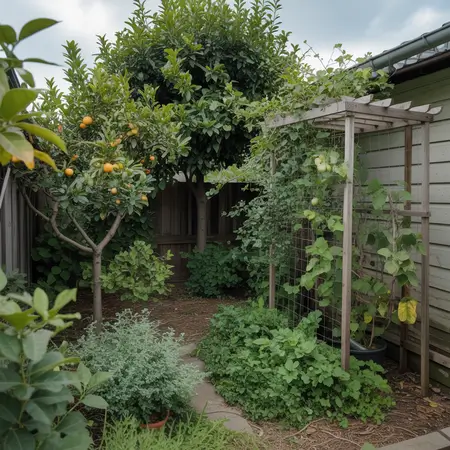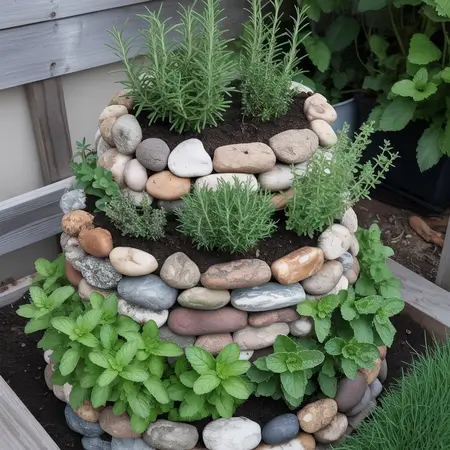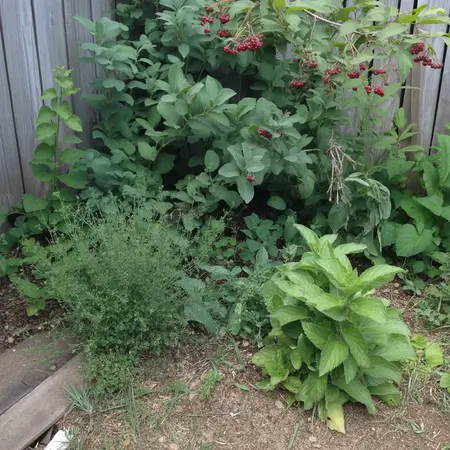Beginner-Friendly Permaculture Gardening Ideas You’ll Love
Permaculture gardening is about copying the way nature works. Instead of planting in straight rows or using chemicals, you build a garden that supports itself.
Plants, soil, and animals work together, just like in the wild. The goal is simple: less work for you, and a healthier garden for the long run. Here are some easy permaculture gardening ideas you can try.
1. Plant a Food Forest
A food forest is like a mini-forest that grows food. You plant in layers, just like in nature.

Big trees provide shade, smaller fruit trees grow under them, shrubs like berries fill the middle, vines climb, and herbs and groundcovers grow at the bottom.
All the plants help each other. The trees give shade and hold water, the shrubs provide food, and the groundcovers keep soil moist. Once planted, a food forest needs less care than a regular garden and gives food for many years.
2. Use Companion Planting
Some plants grow better when planted next to each other. This is called companion planting. For example, tomatoes and basil make good neighbors.
Basil helps keep pests away, and tomatoes give basil shade. Corn, beans, and squash also grow well together, known as the “Three Sisters.”
The corn gives beans a pole to climb, beans add nitrogen to the soil, and squash covers the ground. With companion planting, your garden becomes stronger and healthier without extra chemicals or work.
3. Grow Perennial Vegetables
Most vegetable gardens need replanting every year, but perennials come back on their own. Asparagus, rhubarb, artichokes, and walking onions are good examples.
Once planted, these vegetables grow for many years with little care. They save time, reduce work, and keep the soil strong because you don’t dig them up every season.
Perennials also create a stable food source, which is a key part of permaculture. Adding even a few perennials to your garden gives you food with less effort year after year.
4. Plant a Guild Around Trees
In permaculture, a “guild” is a group of plants that work together around a tree.
For example, around an apple tree, you might plant garlic or onions to keep pests away, comfrey to bring nutrients up from deep soil, and flowers to bring bees for pollination.
Each plant has a role, some protect, some feed, some attract insects. This makes the tree healthier and more productive. Tree guilds turn one fruit tree into a whole system that feeds itself and keeps growing strong.
5. Build a Herb Spiral
A herb spiral is a garden bed built in a spiral shape using soil and rocks. It gives you more planting space in a small area.

The top of the spiral is drier, so herbs like rosemary or thyme grow there. The bottom stays moist, so herbs like mint or parsley do better there.
Because of the shape, you can grow many types of herbs in one small spot, each getting the water and sun it needs. Herb spirals save space and look natural in any garden.
6. Grow Nitrogen-Fixing Plants
Soil health is important in permaculture, and nitrogen is one of the most needed nutrients for plants. Some plants, like beans, peas, clover, and lupins, can take nitrogen from the air and put it into the soil.
This helps nearby plants grow stronger without fertilizer. If you mix nitrogen-fixing plants with your vegetables, you will see better growth and healthier crops.
For example, planting peas before growing leafy greens will give your soil a boost. It’s a simple way to keep soil rich and alive.
7. Mix Flowers with Food Crops
In nature, flowers grow alongside food plants, not in separate beds. In permaculture, mixing flowers with vegetables is a smart idea. Flowers bring in bees, butterflies, and other pollinators that help your crops grow better.
Some flowers, like marigolds, also keep pests away. Planting bright blooms between rows of veggies adds beauty, but more importantly, it creates a balanced garden.
This way, your food plants and flowers work together to make a strong and healthy system, while giving you both food and color.
8. Use Living Groundcovers
Instead of leaving soil bare, cover it with living plants. Groundcovers like creeping thyme, clover, or strawberries protect the soil from drying out.
They also stop weeds from taking over and add nutrients back into the ground. Some groundcovers even give food, like strawberries.
In permaculture gardening, living groundcovers save you time and protect your soil while giving extra harvests. It’s a simple idea, but it makes your garden much more sustainable and natural.
9. Plant Native Edibles
Every region has plants that grow naturally without much care. Adding native edible plants to your garden makes it stronger and easier to manage.

They are already suited to your soil and weather, so they don’t need much water or attention. For example, wild berries, herbs, or greens can often be eaten or used for tea.
By planting native edibles, you support local wildlife and get food that grows almost on its own. It’s a smart way to make your garden more resilient.
10. Layer Crops in Small Beds
Even if you don’t have much space, you can still use permaculture ideas. Instead of planting in rows, try layering crops in one small bed.
For example, grow tall plants like corn or sunflowers, medium plants like beans or peppers in the middle, and short plants like lettuce or herbs at the bottom.
This way, you get more food from the same space, and the plants protect each other. Layering mimics the way nature grows and makes your small garden highly productive.
Final Thoughts
Permaculture gardening is about building systems that care for themselves. Each idea works because it follows nature’s patterns plants, soil, and animals all play a role.
By trying even a few of these ideas, you’ll see your garden become stronger, healthier, and easier to care for. Start small, learn from your garden, and let nature guide the way.
